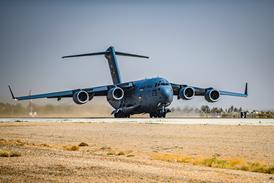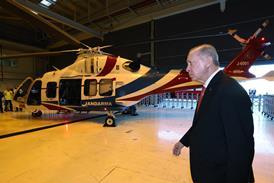Slack operational oversight allowed an Afghan McDonnell Douglas DC-8-63 freighter to take off from a UK runway while nearly 12t above weight limits, resulting in its overrunning and striking its tail.
The incident, involving operator Kam Air, notably contributed to the European Commission's decision to impose a blanket blacklisting on Afghan carriers last November.
Investigators stated that the DC-8 had been transporting 36 ponies from Manston airport, near London, to Buenos Aires via Cape Verde.
The flight engineer prepared a load form showing a take-off weight of 152.5t - calculated using a pony weight of 350kg, rather than the 450kg shown on the cargo manifest - but also prepared a take-off data card with a different weight of 155.9t.
"No crosscheck of the flight engineer's calculations or take-off performance figures was made by any other crew member," said the UK Air Accidents Investigation Branch. It says the crew had "ample time" to follow correct checking procedures.
Analysis shows the data card accurately reflected the DC-8's weight, but the aircraft was 11.7t above the runway-limited take-off weight of 144.2t. The crew, pre-occupied by demands of the Cape Verde-Buenos Aires leg, had worsened the situation by uplifting "significantly more" fuel than required.
"It is likely that their concerns over the next sector occupied the crew to the extent that they were diverted from the immediate task of ensuring safe take-off performance at Manston," the AAIB said in its report into the 11 August 2010 event.
As it attempted to depart Manston's runway 28, which is 2,752m (9,030ft) long, it over-rotated, striking its tail 35m before the end of the paved surface and continuing onto soft ground, running over an approach light. The DC-8's tail skid scored a 117m-long mark before the jet became airborne.
The AAIB says the DC-8 will hit its tail at a pitch of 8.95° but the "instinctive reaction" of the captain to the "rapidly approaching runway end" probably resulted in incorrect rotation technique. Despite the tailstrike and overrun, the aircraft did not sustain serious damage and continued its flight.
None of the three crew members had operated a DC-8 for eight months. They had not been interviewed for their post or gone through a selection process, and the operator had not required further training or checks before releasing them to line operations.
Afghanistan's civil aviaiton ministry told the operator, two months after the incident, that the crew members' licences would be revoked. Both of its DC-8s were also removed from the carrier's air operator's certificate.
Source: Air Transport Intelligence news























